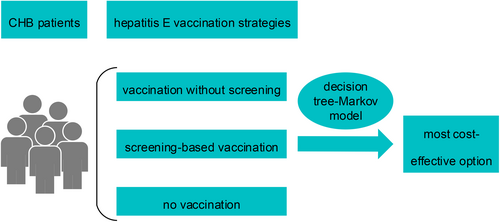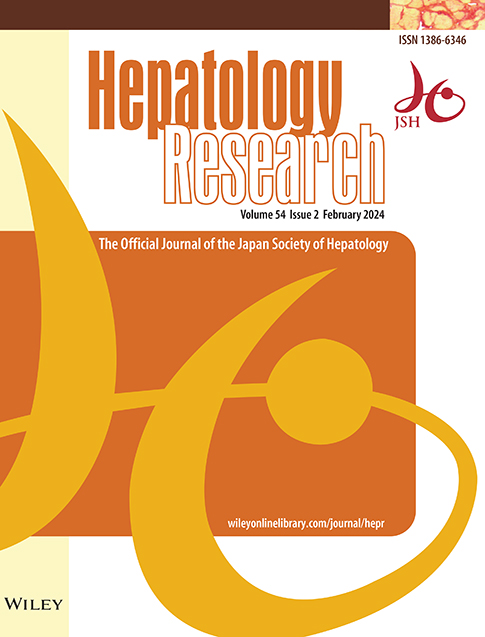Cost-effectiveness analysis of hepatitis E vaccination strategies among patients with chronic hepatitis B in China
Tingting Cui and Xuefeng Zhang are equal contributors.
Abstract
Aim
This study aimed to evaluate the cost-effectiveness of hepatitis E vaccination strategies in chronic hepatitis B (CHB) patients.
Methods
Based on the societal perspective, the cost-effectiveness of three hepatitis E vaccination strategies—vaccination without screening, screening-based vaccination, and no vaccination—among CHB patients was evaluated using a decision tree–Markov model, and incremental cost-effectiveness ratios (ICERs) were calculated. Values for treatment costs and health utilities were estimated from a prior investigation on disease burden, and values for transition probabilities and vaccination-related costs were obtained from previous studies and government agencies. Sensitivity analyses were undertaken for assessing model uncertainties.
Results
It was estimated that CHB patients superinfected with hepatitis E virus (HEV) incurred significantly longer disease course, higher economic burden, and more health loss compared to those with HEV infection alone (all p < 0.05). The ICERs of vaccination without screening and screening-based vaccination compared to no vaccination were 41,843.01 yuan/quality-adjusted life year (QALY) and 29,147.32 yuan/QALY, respectively, both lower than China's per-capita gross domestic product (GDP) in 2018. The screening-based vaccination reduced the cost and gained more QALYs than vaccination without screening. One-way sensitivity analyses revealed that vaccine price, vaccine protection rate, and decay rate of vaccine protection had the greatest impact on the cost-effectiveness analysis. Probabilistic sensitivity analyses confirmed the base-case results, and if the willingness-to-pay value reached per-capita GDP, the probability that screening-based vaccination would be cost-effective was approaching 100%.
Conclusions
The disease burden in CHB patients superinfected with HEV is relatively heavy in China, and the screening-based hepatitis E vaccination strategy for CHB patients is the most cost-effective option.
Graphical Abstract
The cost-effectiveness of hepatitis E vaccination for patients with chronic hepatitis B (CHB) is unclear. We developed a decision tree–Markov model to assess the cost-effectiveness of three hepatitis E vaccination strategies among these patients. We found that the disease burden in CHB patients superinfected with hepatitis E virus is relatively heavy in China, and the screening-based hepatitis E vaccination strategy for CHB patients is the most cost-effective option.
CONFLICT OF INTEREST STATEMENT
Authors declare no Conflict of Interests for this article.
Open Research
DATA AVAILABILITY STATEMENT
The data that support the findings of this study are available from the corresponding author upon reasonable request.





